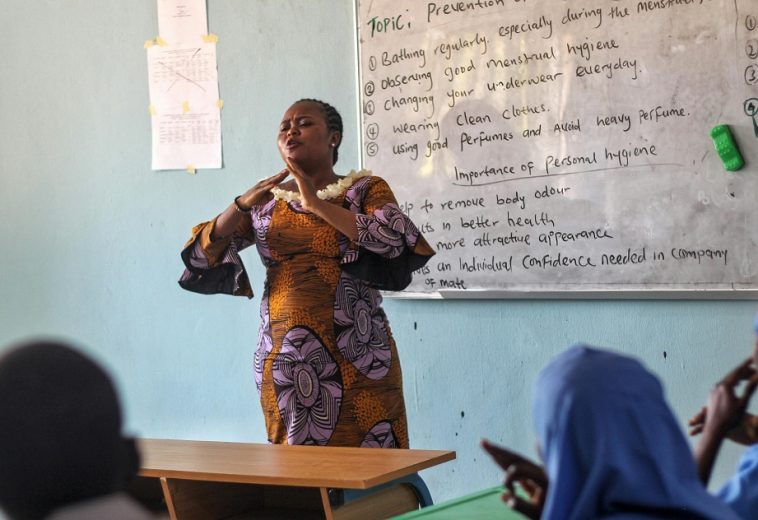“Mount Cameroon is a treasure for Cameroon and Africa, standing as a symbol of natural beauty, biodiversity, and the incredible forces of nature,” says Moses Fokou, a Cameroonian environmentalist. This towering peak, also known as Mount Fako or Mongo ma Ndemi (Mountain of Greatness), is West Africa’s tallest mountain and the highest active volcano in Africa, rising to 4,095 metres (13,435 feet). Its imposing presence, ecological diversity, and cultural significance have made it a destination for adventurers, scientists, and tourists alike.
A Volcano with a Rich Cultural and Geological Legacy
Mount Cameroon has long played a central role in local legend and history, particularly for the Bakweri people, who live on its slopes. For centuries, the mountain has been revered as a sacred place, believed to be the home of spirits and gods. Traditional ceremonies and rituals are still performed to honour these deities, further embedding the mountain into the cultural fabric of the region.
Geologically, Mount Cameroon is part of the Cameroon Volcanic Line, a series of volcanoes stretching across the country and into the Atlantic Ocean. It is a stratovolcano, formed from layers of solidified lava and volcanic ash. What makes Mount Cameroon particularly remarkable is its frequent volcanic activity. It is the only active volcano in West Africa, with its most recent eruption occurring in February 2012. Though no lives were lost in that eruption, the mountain remains a potential hazard for nearby communities.
Biodiversity: A Haven for Unique Species
Mount Cameroon is a biodiversity hotspot, boasting a wide array of wildlife and plant species found nowhere else in the world. Its diverse habitats range from tropical rainforests at the base to alpine grasslands near the summit, each supporting unique ecosystems. The mountain is part of the Mount Cameroon and Bioko Montane Forests ecoregion, recognised for its ecological richness. The area is home to several endemic species, including the Mount Cameroon Francolin and the Cameroon Clawed Frog, as well as a vast range of plant life.
According to a 2023 biodiversity report by the Global Environment Facility (GEF), over 2,500 plant species are found on Mount Cameroon, some of which are classified as endangered. However, ongoing deforestation and human encroachment pose serious threats to the region’s ecological balance.
Tourism: A Destination for Adventure Seekers
Mount Cameroon is a premier destination for hikers and adventurers, offering both breathtaking views and challenging treks. The most famous route is the Guinness Trail, named after the Mount Cameroon Race of Hope, a 38-kilometre (23.6-mile) ultra-marathon that takes competitors from the base of the mountain in Buea to the summit and back. This race is considered one of the most difficult in the world, as athletes endure rapidly changing weather conditions and rugged terrain.
For the more casual hiker, a typical trek to the summit takes two to three days. Climbers pass through multiple climate zones, starting in the lush rainforests at the base and finishing in the barren, rocky landscapes at the top. The view from the summit, with the Gulf of Guinea in the distance, offers a stunning reward for the effort.
Tourism around Mount Cameroon has grown steadily. A 2022 report by the Cameroon Ministry of Tourism and Leisure indicated a 15% increase in visitors to the region, generating approximately $5 million in revenue. Despite its potential, tourism infrastructure remains underdeveloped. Local communities are advocating for more sustainable tourism models that benefit both the environment and residents.
Economic Importance and Environmental Challenges
Mount Cameroon is vital to the local economy, particularly in agriculture. Its fertile volcanic soils are ideal for cultivating crops such as cocoa, coffee, bananas, and palm oil, all of which are major exports for Cameroon. Additionally, the mountain serves as a crucial source of fresh water for surrounding communities.
However, the mountain and its ecosystems face serious environmental challenges. Unsustainable agricultural practices, logging, and human settlement threaten the biodiversity and stability of the area. Climate change, rising temperatures, and unpredictable rainfall patterns further endanger wildlife and the livelihoods of those dependent on the mountain’s resources. Forest fires, often triggered by human activity, are becoming increasingly common, placing additional stress on the environment.
Conservation efforts have been underway for years. The Mount Cameroon National Park, established in 2009, covers 58,178 hectares and provides legal protection for much of the mountain’s ecosystem. According to the World Wildlife Fund (WWF), illegal logging activities have been reduced by 40% over the past decade due to the combined efforts of local authorities and international organisations.
A Symbol of Cameroon’s Natural Wealth
Mount Cameroon is more than just Africa’s tallest active volcano; it symbolises the country’s natural wealth, ecological diversity, and cultural heritage. As Cameroon continues to develop, balancing conservation, economic growth, and local needs will be essential to preserving this irreplaceable natural wonder.
As Moses Fokou aptly put it, Mount Cameroon is a treasure for all of Africa. It serves as a reminder of nature’s incredible power and the shared responsibility to protect it for future generations. Whether for scientific study, adventure, or simply to appreciate its majestic beauty, Mount Cameroon stands tall—both literally and metaphorically—as one of Africa’s most iconic landmarks.




